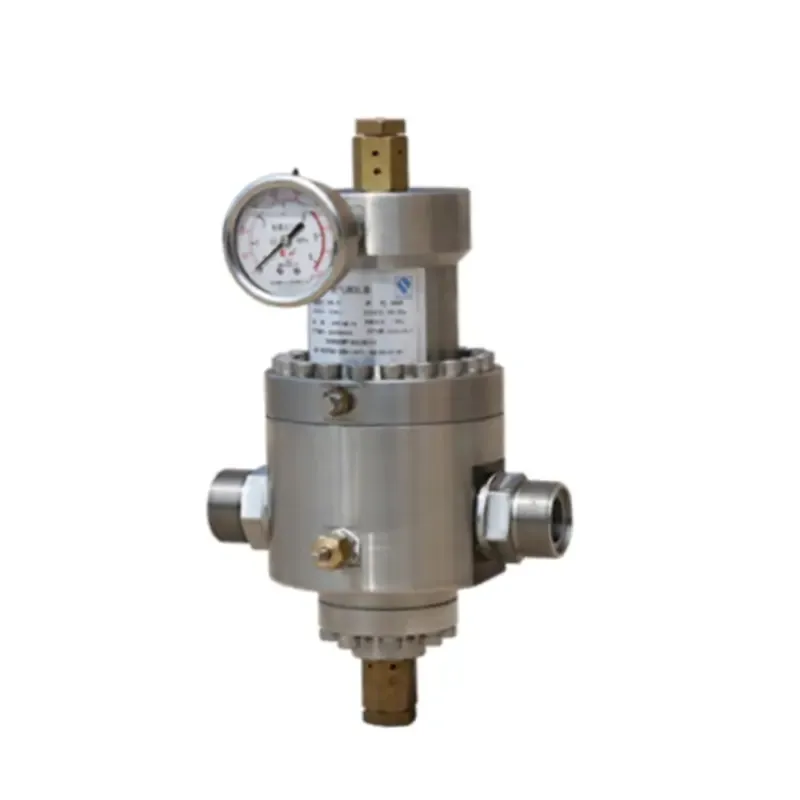
Nov . 10, 2024 19:29
Back to list
Gas Pressure Regulator Valve for Efficient Flow Control
The Importance of Gas Pressure Regulating Valves
In various industrial and residential applications, the control of gas pressure is crucial for ensuring safety, efficiency, and functionality. Gas pressure regulating valves, commonly referred to as gas regulators, play a vital role in achieving this control. These devices allow for the maintenance of a steady and safe pressure level in gas distribution systems, thereby preventing potential hazards associated with gas leaks or overpressure situations.
What is a Gas Pressure Regulating Valve?
A gas pressure regulating valve is a mechanical device that reduces and stabilizes the pressure of gas from a high-pressure source to a lower, usable level. These valves are designed to ensure that the pressure remains within a predefined range that is deemed safe for particular applications. They are often used in residential heating systems, commercial cooking appliances, and industrial processes involving gas.
How Do They Work?
Gas regulators function based on a simple mechanism. When gas flows into the regulator, the inlet pressure is compared to a pre-set outlet pressure through a diaphragm or spring-loaded mechanism. If the inlet pressure exceeds the outlet pressure, the regulator automatically adjusts by modulating the flow of gas through it, allowing for a consistent pressure output. This dynamic regulation helps to accommodate fluctuations in upstream gas pressure and demand downstream, which is essential in providing reliable operation in systems utilizing gas.
Types of Gas Pressure Regulating Valves
There are several types of gas pressure regulating valves, including
.
2. Two-Stage Regulators In situations where there are wide fluctuations in pressure, two-stage regulators provide better performance. The first stage reduces high pressure to an intermediate level, while the second stage further reduces it to the desired outlet pressure.
صمام منظم ضغط الغاز

3. Electromechanical Regulators These advanced regulators use electronic controls to maintain desired pressure levels. They are often used in critical applications where precision is required, such as in laboratory settings or sophisticated industrial processes.
Applications of Gas Regulators
Gas pressure regulating valves are utilized in a variety of applications
- Residential Heating In homes, regulators ensure a steady gas supply for heating systems and stoves, maintaining safety and efficiency in daily cooking and heating activities. - Industrial Use Many manufacturing processes require specific gas pressures for optimal operation. Regulators are integral to maintaining these conditions in factories, ensuring consistent production levels.
- Gas Distribution Networks In the broader gas distribution framework, regulators control the pressure before gas enters residential or industrial pipelines, maintaining a safe outlet pressure for consumers.
Safety and Maintenance
Given the potential hazards associated with gas systems, regular maintenance and inspection of gas pressure regulating valves are essential. Over time, wear and tear can affect the performance of these devices, potentially leading to dangerous conditions. It is critical to ensure that they are functioning correctly and are free from obstruction, as any inefficiency could result in increased risks of gas leaks or pressure surges.
Conclusion
Gas pressure regulating valves are fundamental components in the safe and efficient use of gas in various applications. By maintaining consistent pressure levels, these regulators not only protect equipment and systems but also play a significant role in ensuring safety for users. With advancements in technology, the future of gas regulation looks promising, with opportunities for greater precision and reliability in gas management systems. Regular monitoring and maintenance will further enhance their effectiveness, ensuring that both residential and industrial users can benefit from the safe use of gas for years to come.
Latest news
-
Safety Valve Spring-Loaded Design Overpressure ProtectionNewsJul.25,2025
-
Precision Voltage Regulator AC5 Accuracy Grade PerformanceNewsJul.25,2025
-
Natural Gas Pressure Regulating Skid Industrial Pipeline ApplicationsNewsJul.25,2025
-
Natural Gas Filter Stainless Steel Mesh Element DesignNewsJul.25,2025
-
Gas Pressure Regulator Valve Direct-Acting Spring-Loaded DesignNewsJul.25,2025
-
Decompression Equipment Multi-Stage Heat Exchange System DesignNewsJul.25,2025

